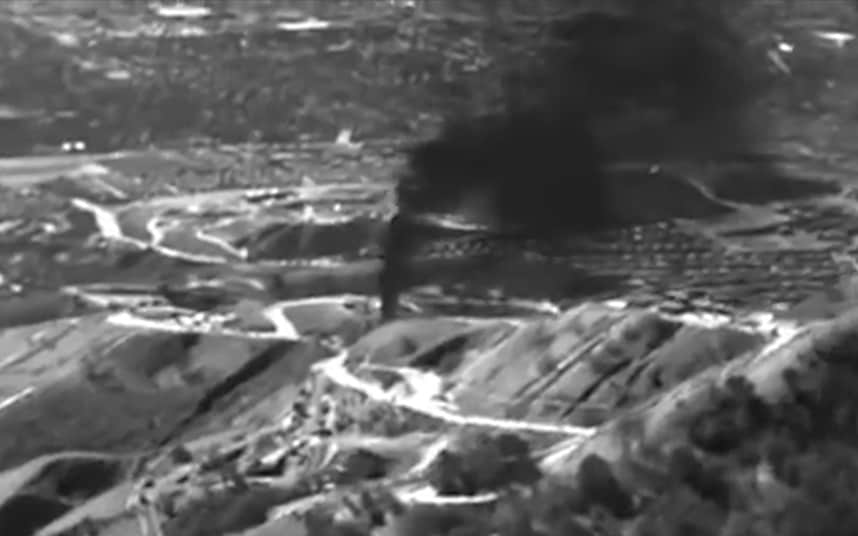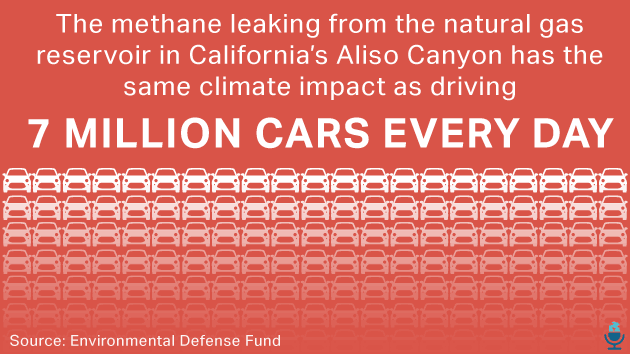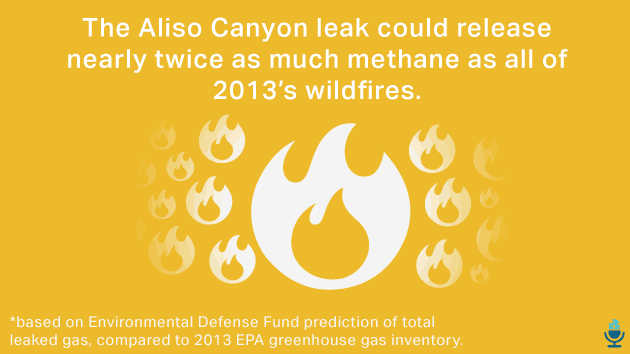
On October 23, 2015, a faulty natural gas well near the Los Angeles neighborhood Porter Ranch in California began leaking Methane. This slow-moving environmental disaster has displaced thousands of families and, worst of all continues to release the greenhouse gas equivalent of driving 7 million cars each day.
As this disaster affects the whole of humanity, it’s important to get educated on the upsetting issue. Following are 7 important facts you need to know about the California Methane leak:
-
When did it start?
Methane began leaking from the faulty well in Aliso Canyon (owned by Southern California Gas company) on October 23rd, Since the leak from the natural gas storage facility began, the well has released about 70,000 pounds of methane every hour – equivalent to about a quarter of the state’s methane emissions, according to CBS News.
The leak has been deemed an environmental disaster, as Methane is a particularly powerful greenhouse gas; pound for pound, it traps 86 times more solar radiation than carbon dioxide over a 20-year-period.
SoCalGas estimates that it will be February or March 2016 before the leak is fixed, reports Live Science.
2) Why Will It Take So Long To Fix?
Most leaky wells take just a few days to repair – one simply plugs the well. This leak, unfortunately, is escaping not just from the well, but from the soil and rocks around it.
According to the Los Angeles Times, the leaky well in question is 61 years old. The reservoir holding the natural gas is among the biggest in the country and is also thousands of feet below the ground. Experts believe there is a hole in the pipe that carries natural gas from the reservoir to the top of the well about 500 feet underground.
The pipe is surrounded by a cement casing, and the gas may be leaking from the hole in the pipe into the cavity of the casing. From there, it flows down until the casing ends, where it is leaking into the surrounding soil and rock.
To fix this, crews will have to build an entire new relief well. (See #4)

3) How Is This Leak Affecting The Earth’s Climate?
According to Timothy O’Connor, the California Oil and Gas Program director at the Environmental Defense fund, this is one of the largest – if not the largest – methane leaks on record. In effect, the EDF estimates that roughly 10 million metric tons of carbon dioxide equivalent will have been released by the time the leak is plugged. That’s about 6% of all methane emissions from the US gas industry in 2013.
Methane that enters the atmosphere takes about 12 years to break down, as it is mostly removed from the air by chemical reactions with other compounds.
4) What Is The Gas Company Doing To Stop The Leak?
SoCalGas is “doing everything we can to stop the leak as quickly as possible,” says company spokeswoman Melissa Bailey. In addition, the SoCalGas has “committed to mitigating the effects” of the leak on climate change, and has gotten in contact with Governor Jerry Brown’s office to do so.
Said Bailey:
“We’re not sure how the mitigation will happen—everything’s on the table. We want to make sure we don’t set California back.”
The gas company plans to fix the leak by drilling a “relief” well at 5,000 feet (1,524 m), or below the level of the current leak, to divert the methane flow. Then, the company plans to temporarily plug the leaking well with a mixture of mud and fluids, before sealing it permanently with cement.
This will be tricky, however, as it involves using magnetic-ranging techniques to find a 7-inch (17.8 centimeter) pipe located within 1,500 feet (457 m) of rock, while not damaging other pipes nearby.
The workers will also have to stop their work if air concentrations of methane get too high and pose either a possibility of explosion or a health risk.

5) How Is The Leak Affecting Nearby Residents?
Nearby residents are reporting a number of acute symptoms, including blurry vision, nausea and vomiting, dizziness, shortness of breath, and headaches. According to experts, the symptoms are likely caused by exposure to mercaptans – chemical scents added to natural gas, which is naturally odorless.
The #1 concern for nearby residents, however, is exposure to benzene, a known carcinogen that has been found at levels three to five times higher than those in urban Los Angeles. According to O’Connor, “any exposure to those is concerning.”
Not only is the leak unhealthy for carbon-based life forms and the environment, it’s dangerous. Methane is highly flammable (not surprising, as it is used for combustion in both gas stoves and rockets). For these reasons, Los Angeles County ordered SoCalGas to relocate any families reporting symptoms from the leak.
So far, the company has paid to relocate 2,500 families, and more than 1,300 are waiting to move. Because the leak will not be fixed for two to three months, says Bailey, “we’re working to provide residents with extended stay and more home-like accommodations.”
6) Residents Must Be Pissed
As you can imagine, families and individuals are not pleased they’ve had to uproot their lives due to the leak. At present, five lawsuits have been brought against SoCalGas, mostly from residents seeking damages and compensation for the impact on health and property prices. The company has also been sued by the city of LosAngeles for air and climate pollution.
7) So, What Started The Leak To Begin With?
No one can state what caused the leak for sure. But, according to Mother Jones, what is known is that the facility had documented corrosion and well failures at Aliso Canyon.
In a testimony last year, Philip Baker, director of storage operations at SoCalGas, wrote, “Well integrity may have already been severely compromised requiring immediate attention to maintain safety, integrity, and reliability.”
Reportedly, Baker was requesting permission to raise rates, quoting that the company would need more than $30 million to conduct repairs at its four storage facilities.
Unfortunately, according to O’Connor, the storage facilities are exempt from the federal laws that regulate underground well integrity, which leaves regulation up to the states. “The regulation of these facilities really flies under the radar until catastrophe strikes.”
What are your thoughts? Please share this article to raise awareness and comment your thoughts below!
This article (7 Things You Need To Know About The California Methane Leak) is free and open source. You have permission to republish this article under a Creative Commons license with attribution to the author and TrueActivist.com


